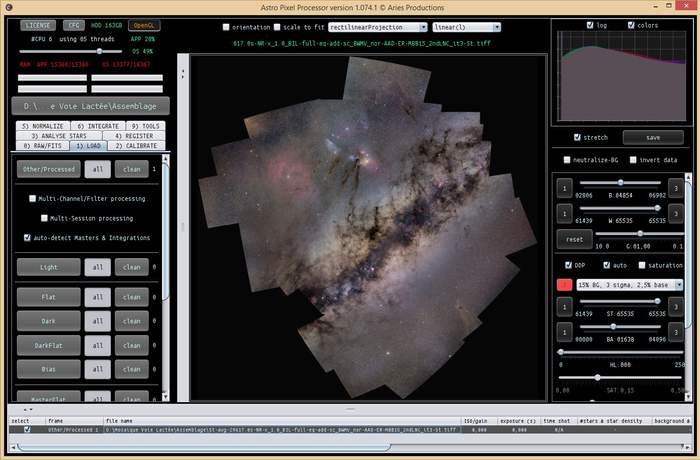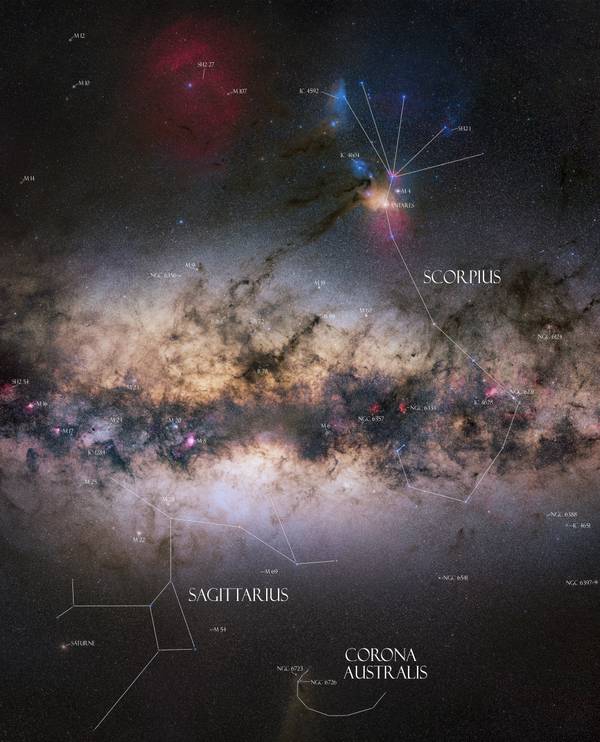Megalaxy zoom
Foreword
This image of 230 million pixels presents a detailed view of the galactic center. This very bright region of the night sky stretches from the Scorpius constellation to the Corona Australis constellation. Realizing this image was impossible from France because the galactic center is too low on the southern horizon. The acquisitions were therefore made in the southern hemisphere, under the most beautiful skies in the world when the center galactic was at its zenith: 2 trips to Chile (2016 and 2018) and 1 trip to Namibia (2019).
There, during the southern autumn and winter, the galactic center is at its zenith and the stars shine so bright that they light up the night. It is a light from the past. Darkness is therefore not complete and once our eyes are used to it, it reigns like a « little Moon » atmosphere: it is possible to move around without a headlamp. I invite you to discover this extraordinary region of sky, rich in golden stars, dark and colorful nebulae.
The image in numbers
- Total exposure time: 38 hours and 40 minutes.
- Number of stacked images: 2320.
- Final dimensions: 13655 * 16831 pixels (229.8 mega pixels).
- 37 tiles were put together to create the mosaic, each representing a total exposure of about 1 hour (or more when I forgot to cut the intervalometer).
- Weight of the final .tif file (compressed): 1.98 GB.
- Total calculation time: I don’t really remember anymore, but each calculation of the mosaic took about 10 hours. My PC may have ran for more than 150 hours in total just to compute the image :)

Annotated version
The 3 constellations have been drawn and 46 objects identified on this annotated image:
Situation
The image covers the regions of the constellations of Sagittarius, Scorpius and Corona Australis which lie around the bulb galactic, an extremely rich region in celestial objects.

Hardware and software
Acquisitions were made with a Canon EOS 6D Astrodon modded set to ISO 800 and a Canon EF 135 mm F2 lens set to F2.5. The mounts were a Vixen GPD2 (Chile 2016) and then a small Skywatcher Star Adventurer (Chile 2018, Namibia 2019). These mounts not being automatable, the framing was made manually using the live view with therefore a lot of overlaps… hence the big number of tiles. Preprocessing and assembly of the mosaic were made with the Astro Pixel Processor software and the final processing was done in Photoshop.

